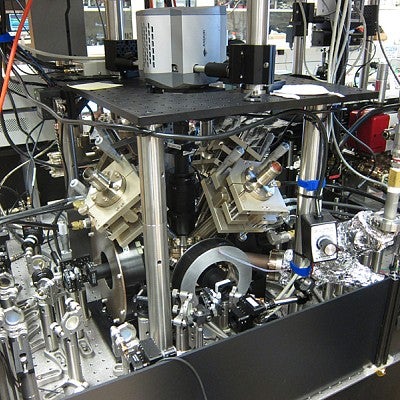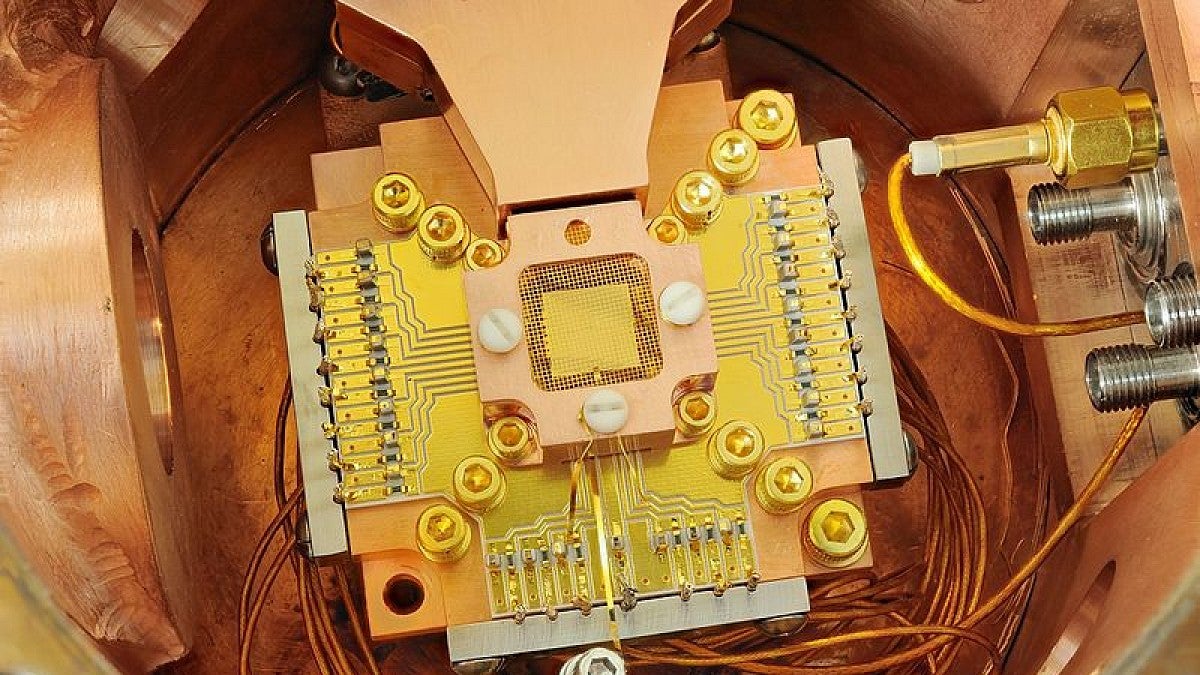England-native David Allcock had unfinished research in Colorado when the University of Oregon hired him in September 2018, so before joining the Department of Physics he was granted leave to finish the job.
That project, which he helped design at the National Institute of Standards and Technology, landed in a recent issue of the journal Science. His eight-member team produced the tiniest measurement of motion – down to trillionths of a meter – documented so far of a single electrically charged atom known as an ion.
The accomplishment, Allcock said, is a bit of a larger puzzle, which is zeroing in on how to improve entanglement between closely located atoms that normally don’t interact. That connection is a crucial building block toward quantum computing, he said.
Allcock has arrived at the UO and bringing that line of research with him. This fall, however, sees him working part time while on paternity leave. He already has three graduate students helping him.
His lab, under Willamette Hall, is being built to his specifications following a demolition and retrofit of existing space. It is expected to be completed by 2020. It will feature the same tabletop ion-trap equipment that he helped design and use in Colorado.
“The technique we used at NIST was designed to improve the building block for storing and transmitting quantum information,” said Allcock, who earned a doctorate from the University of Oxford.
“You have two qubits. You need to have gates between the two,” he said. “These qubits, which we stored in the ions, don’t talk to each other as they sit side by side. By exciting their shared motion in a way that’s dependent on their state, we give them a ‘bus’ to talk over. It has all to do with the motion.”
To do that, Allcock’s team uses lasers and microwave energy to generate motion. The idea is that in quantum computing, qubits can exist in multiple states at once, rather than just up or down, or on and off — a capability related to data storage and transfer that could revolutionize the computing industry.

“People want to build quantum computers, fundamentally different computing that can solve certain kinds of problems,” he said. “Some technology companies are moving toward this, but so far they are only able to accomplish bits of it. There is still a long way to go. I think our study addressed a piece of the puzzle.”
At the UO, Allcock will continue to advance that work. He’ll have help from both international and departmental colleagues, including paper co-author David Wineland, a Nobel laureate with whom he worked with at the national institute after completing his doctoral work. Wineland, whose research on controlling motion has increased the precision of atomic clocks, joined the UO in 2017.
Allcock said he was drawn to the UO by Wineland’s move to Eugene and the widely recognized leadership of UO physicist Michael Raymer, whose scientific expertise and lobbying efforts played a pivotal role in establishing the National Quantum Initiative Act.
At the UO, Allcock will be based in the Oregon Center for Optical, Molecular and Quantum Science, which, he noted, “has been doing quantum optics well for a long time.”
Allcock’s research draws from quantum mechanics and is particularly based on Heisenberg’s uncertainty principle. That framework, put forth in 1927 by German physicist Werner Heisenberg, essentially states that if you have two variables, then the more you find out about one of them, the less you know about the other one, Allcock said.
For quantum computing, he said, harnessing information about the uncertainty of motion of qubit-carrying ions is vital.
“Quantum science is a small field, and the University of Oregon is a big player in the United States,” he said. "It’s a good time to be here and in the field.”
—By Jim Barlow, University Communications


